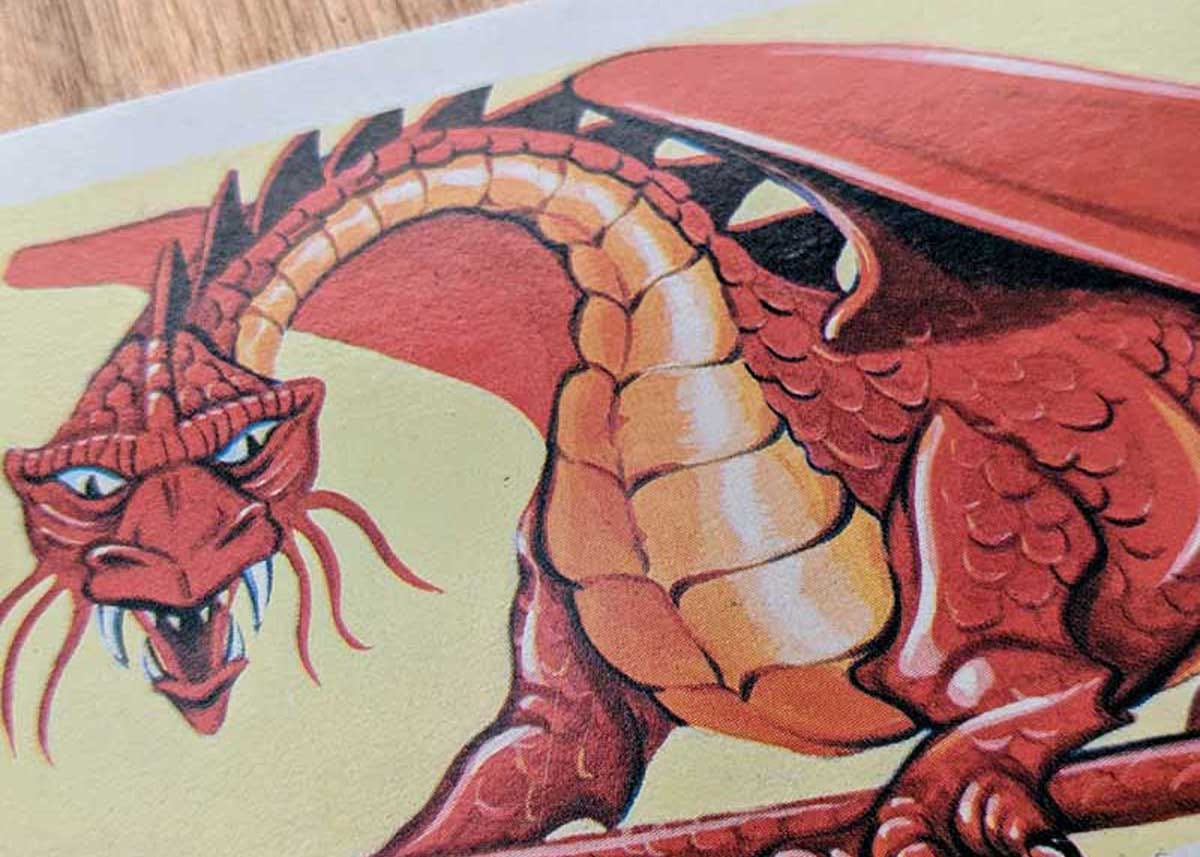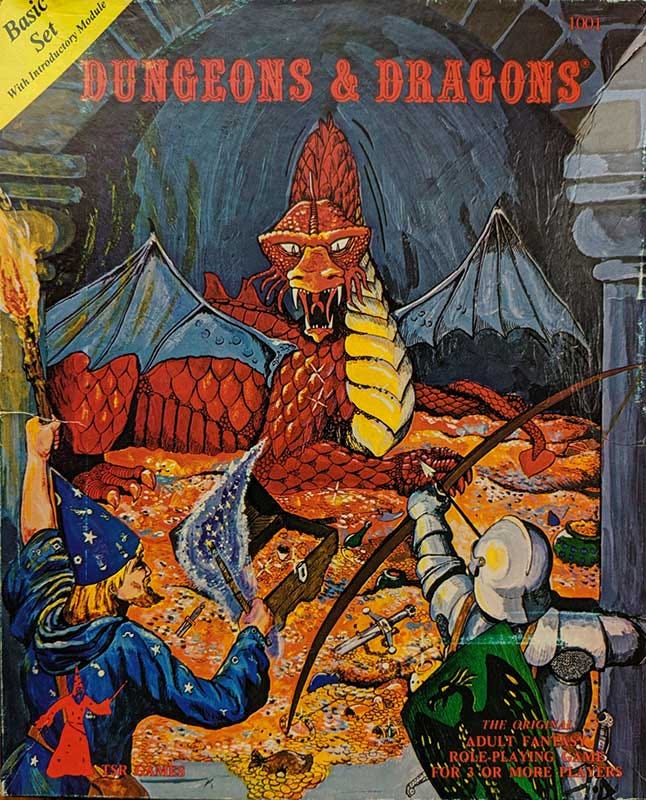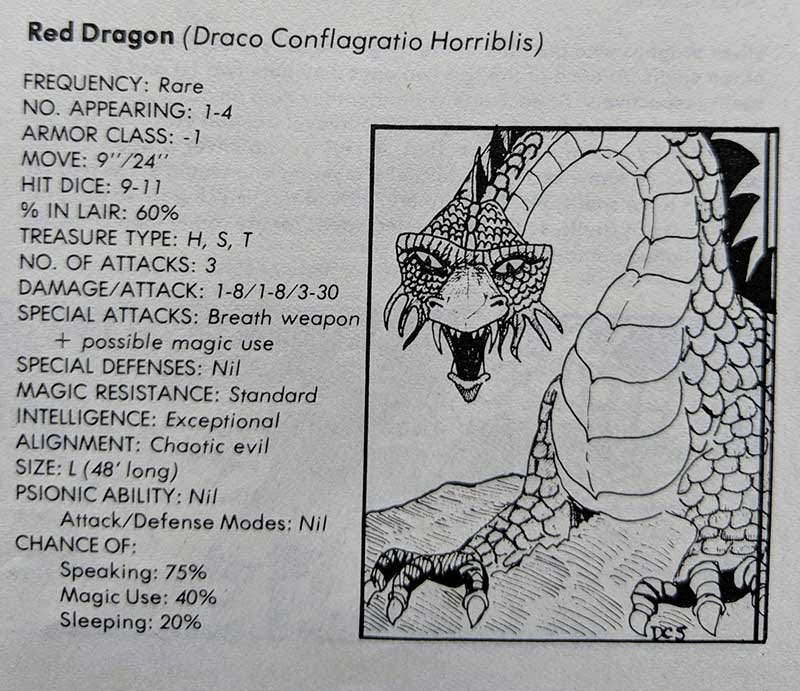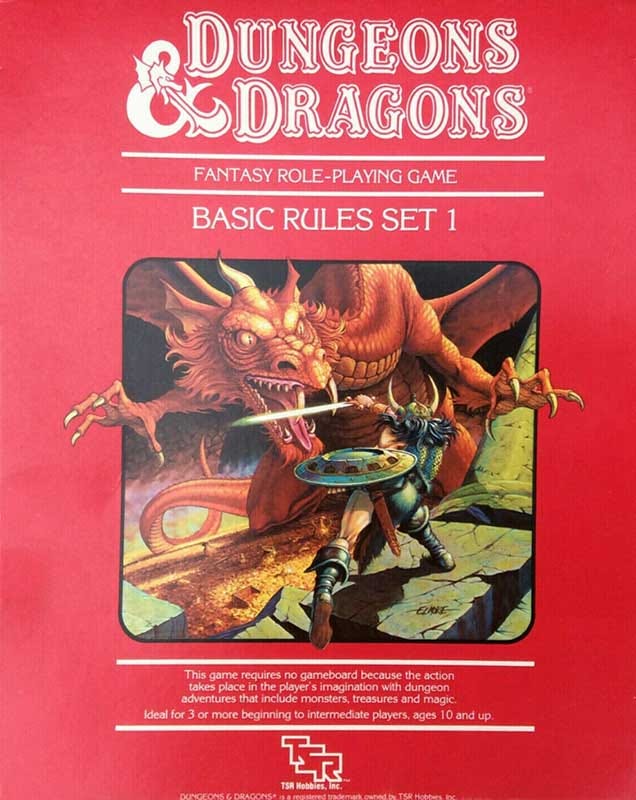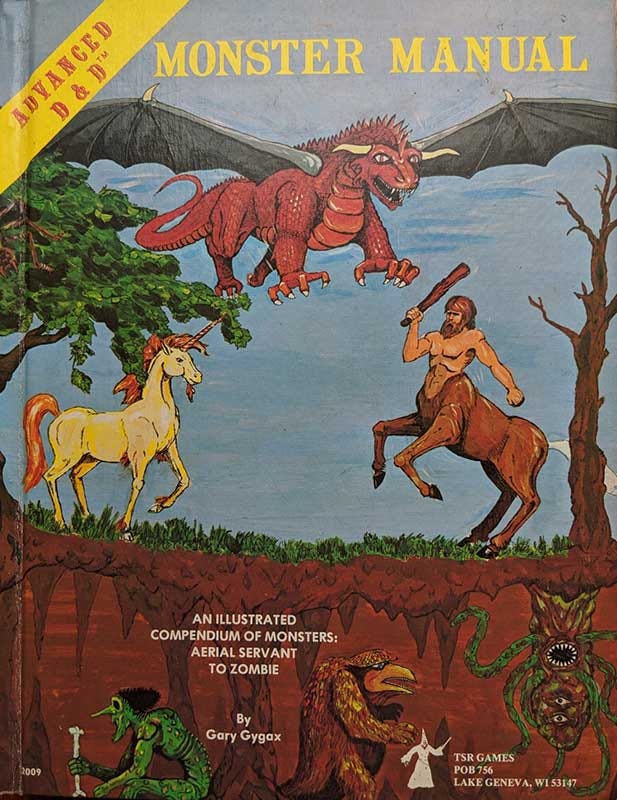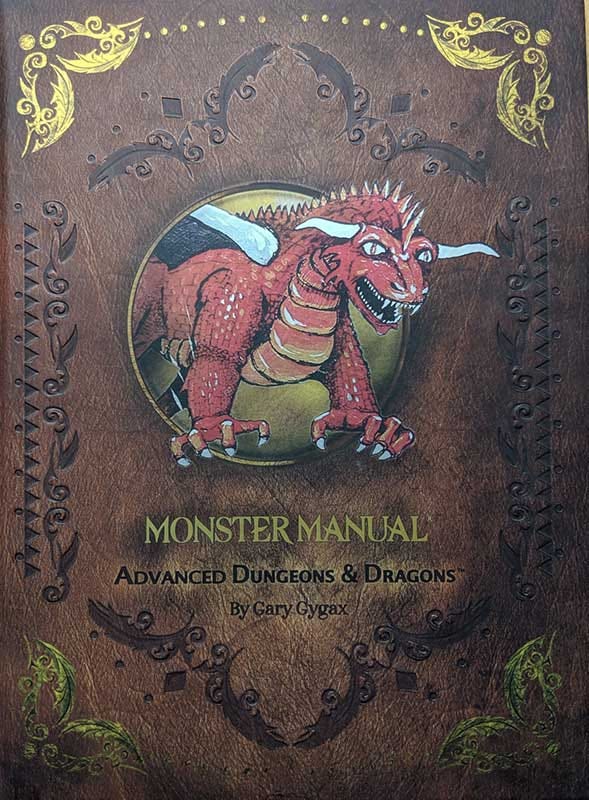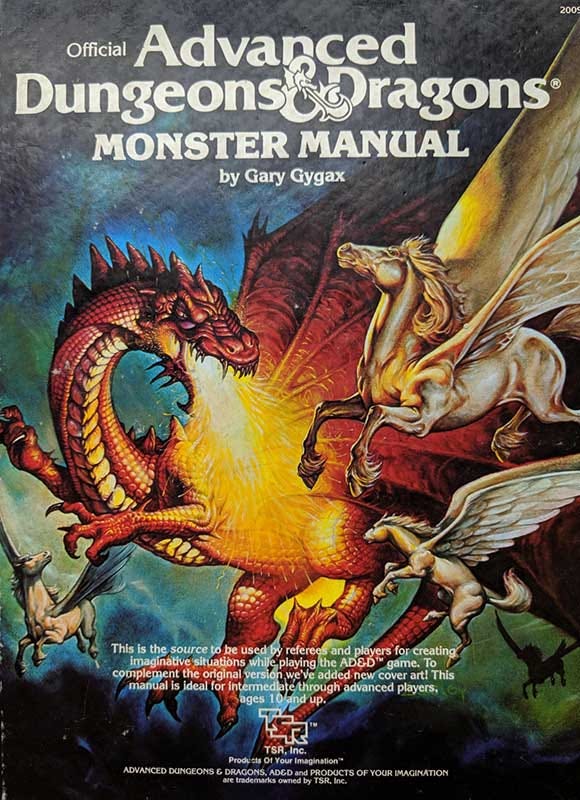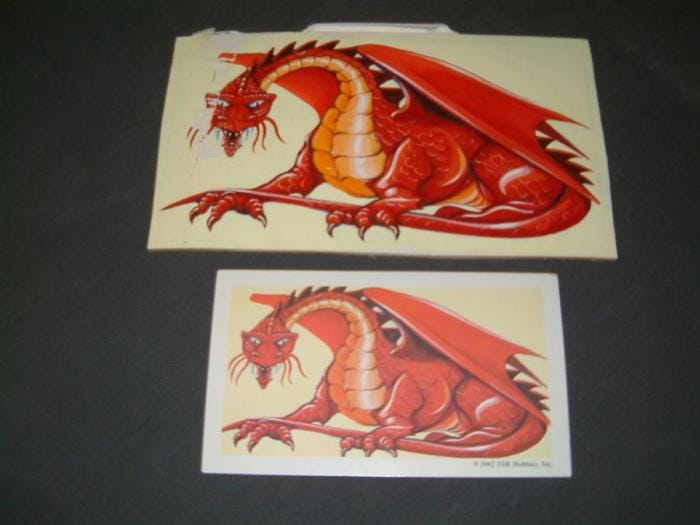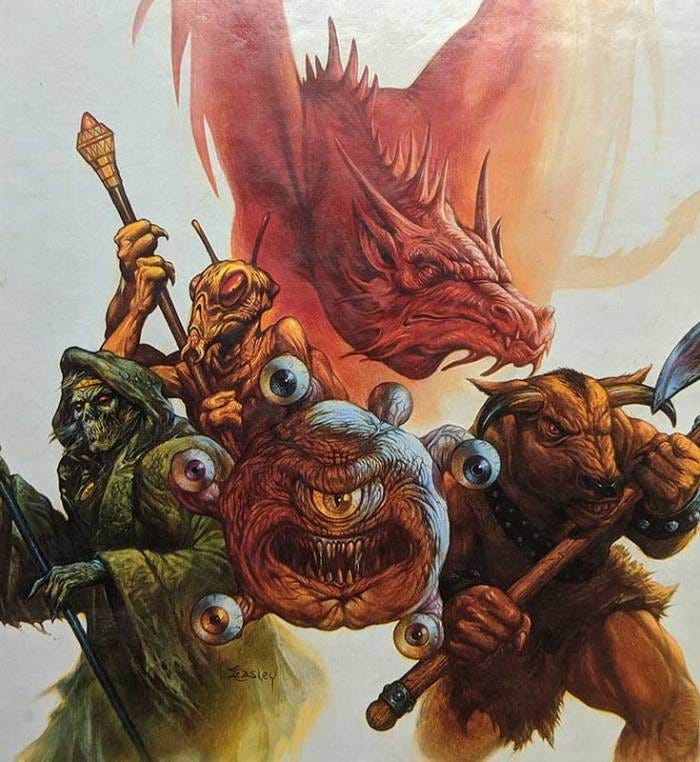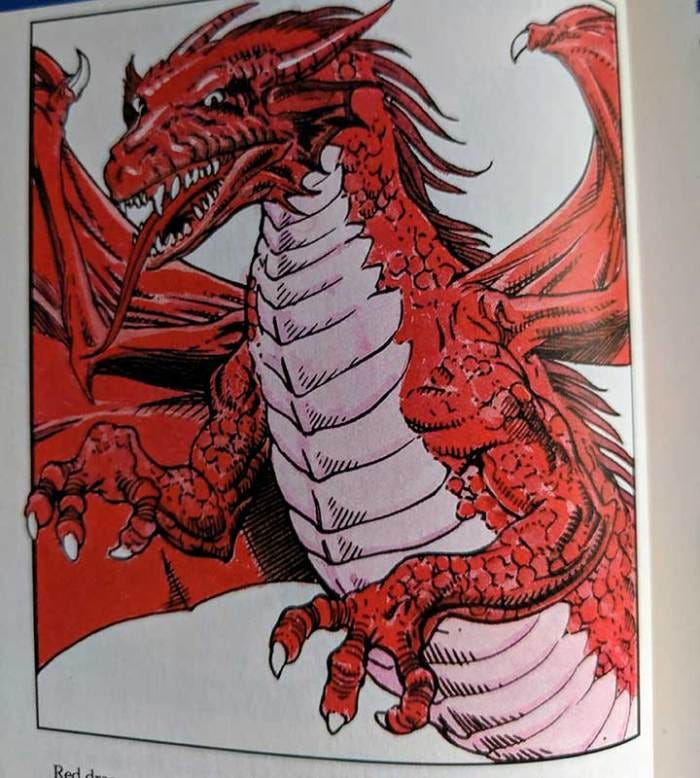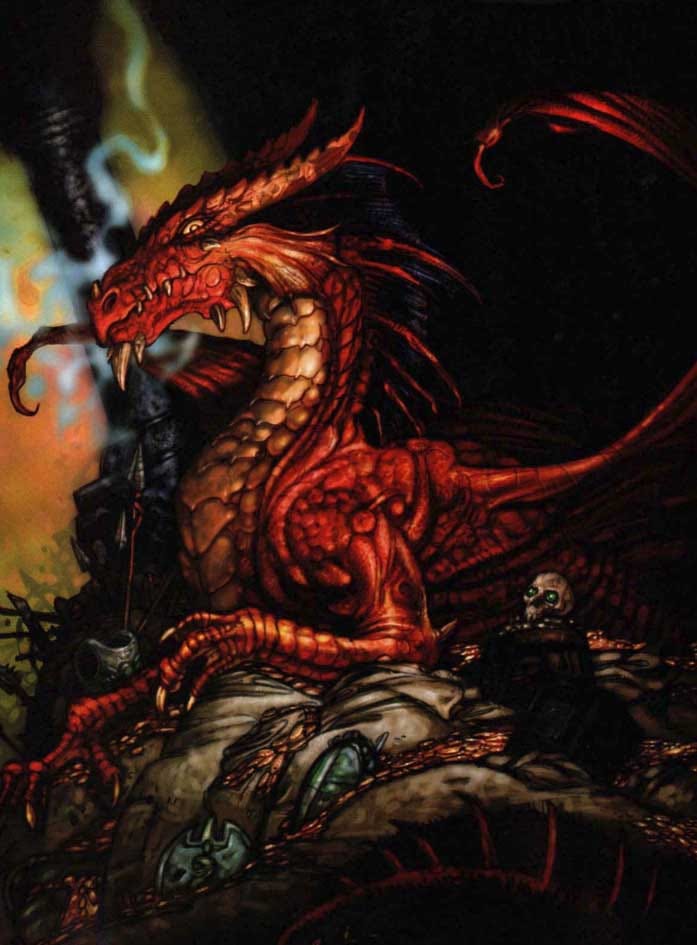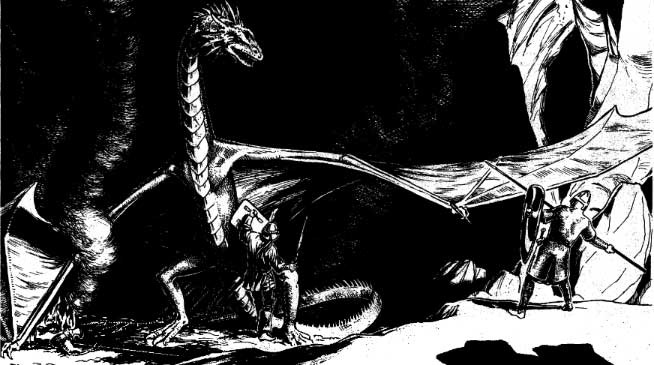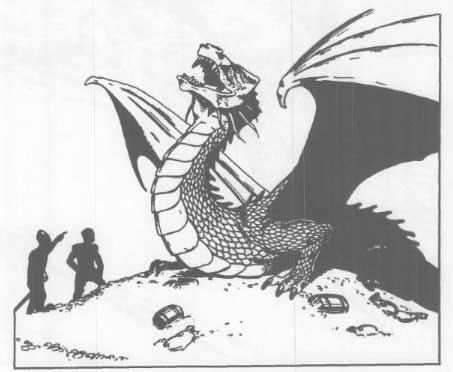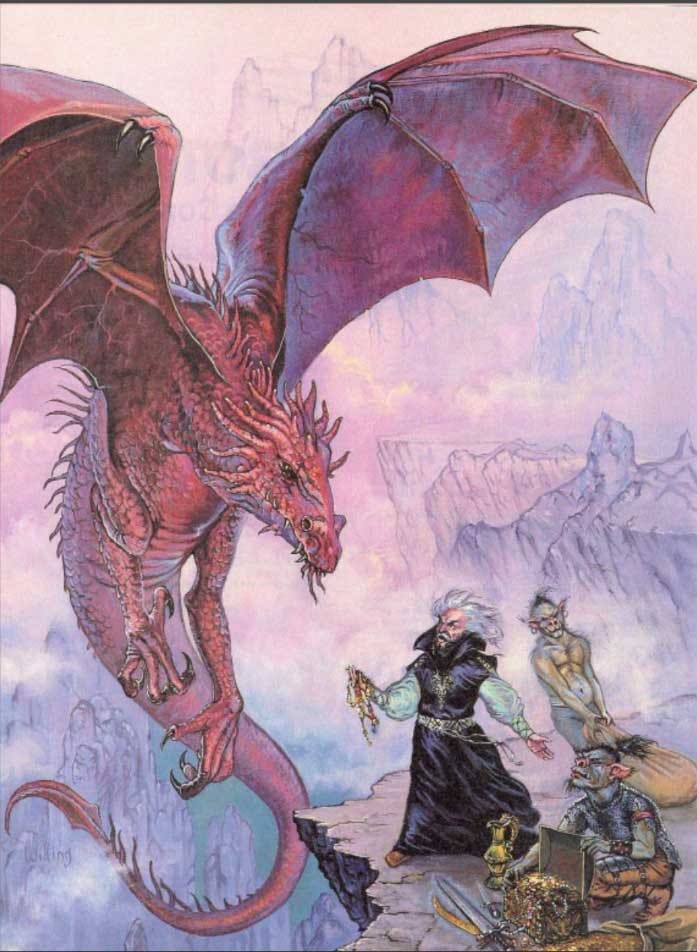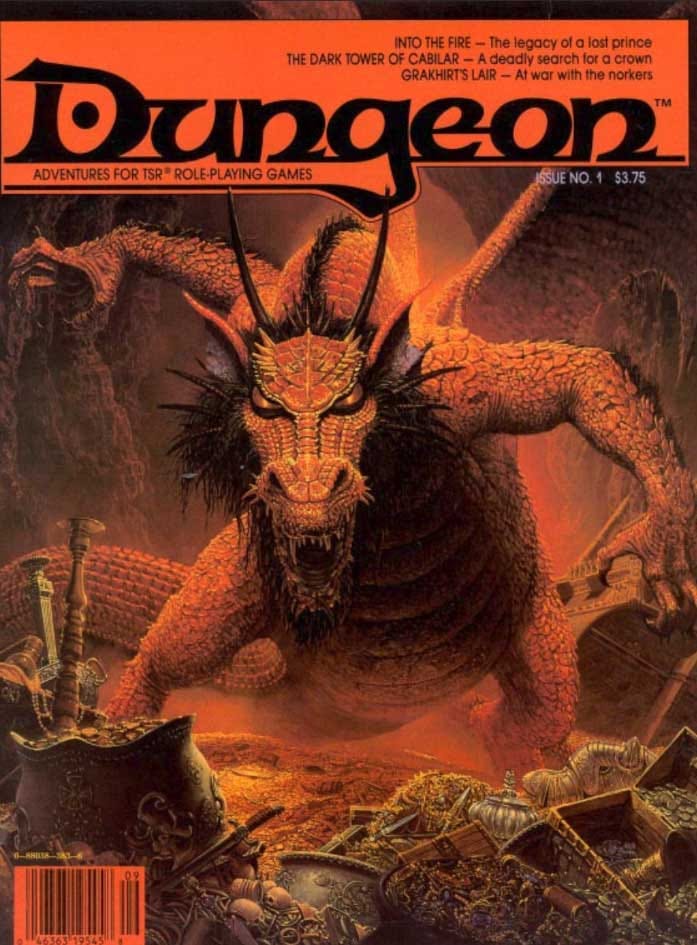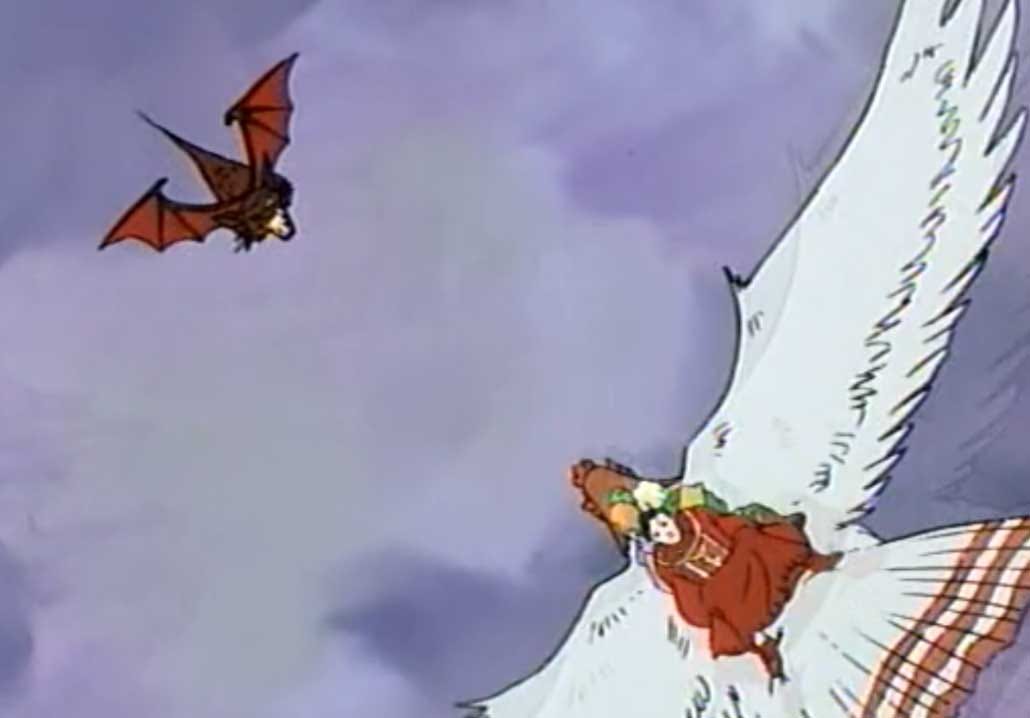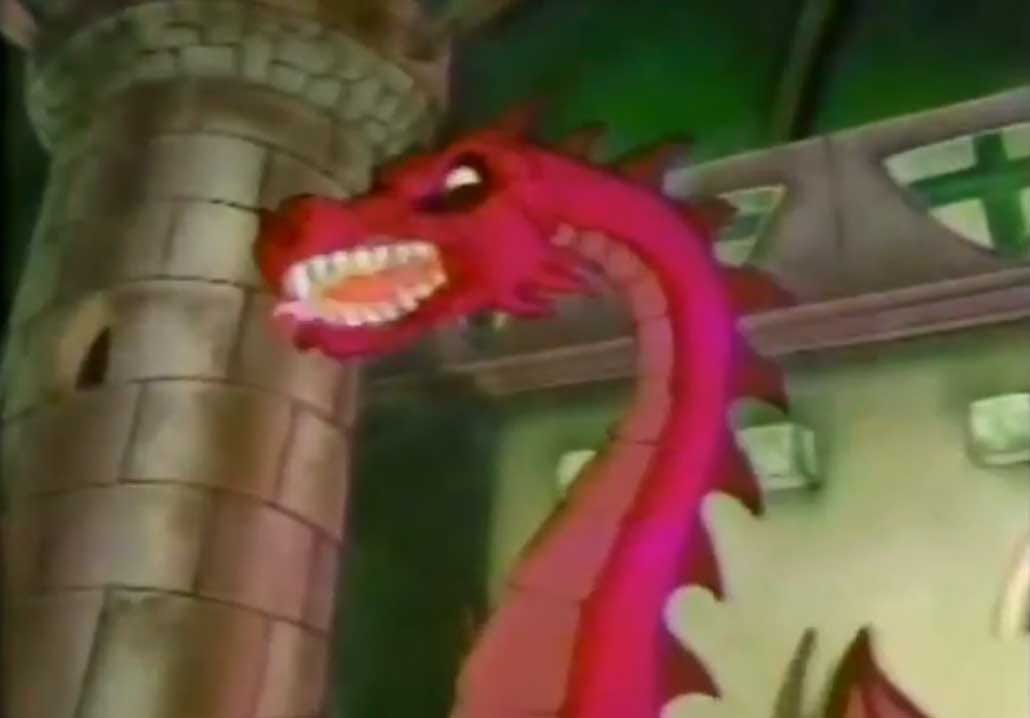The Art of the Dungeons & Dragons Red Dragon
It put the Dragon in Dungeons & Dragons
The Red Dragon was the first dragon to make an appearance on an AD&D Monster Card. It is an iconic monster, not just as a namesake of the game itself, but also because it was heavily used on other Dungeons & Dragons products.
The card itself is surprisingly simple. Our menacing scarlet wyrm is curled up slightly, wings near its body and its mouth agape. Perhaps ready to breath fire?
The artist on this particular version of the Red Dragon is Jim Roslof. Roslof did a great job, but his work is not exactly original. The artistic DNA extends back to through the Monster Manual (1977) and the Homes Basic Set (1977). The artist on those works was David Sutherland. As you can see, they are very similar. So much alike that I would have guessed it was the same artist.
In 1983, the Basic Set was revised by Frank Mentzer and renamed Dungeons & Dragons Set 1: Basic Rules. This revision was packaged in a red box, and featured cover art of a Red Dragon by Larry Elmore.
Sutherland also painted the Red Dragon that appears on the cover of the Advanced Dungeons & Dragons Monster Manual. This Red Dragon is stockier, with what appears to be a shorter neck and black bat-like wings. They would use this same Red Dragon art when Wizards of the Coast released their premium reprint on July 17, 2012.
When the book was reprinted in 1985 it featured new cover art by Jeff Easley. This cover captures the scale and ferocity of the Red Dragon in combat against a group of pegasi.
The original art for Roslof’s Red Dragon, was sold back in 2005. Sadly it was damaged before it was sold, but it still great to catch a glimpse of the original art before it was cropped for the card.
Just like all monster cards, the stats for the Red Dragon match those in the Monster Manual (MM). The description on cards though is much more focused on expediting the encounter. So it is filled with lots of extra info about the Red Dragon itself along with a summary of Dragon Ages that you can find on page 29 of the Monster Manual. It is a lot of info for such a small card.
When 2nd Edition of Dungeons & Dragons was released, they originally dumped the book format for the Monster Manual in favor of loose-leaf binder. They did this with the best of intentions. It would allow them to release new monsters and give gamers the freedom to add to it. Unfortunately it was not a great decision, it was impossible to keep things alphabetical since they printed monsters on both sides of each page and the quality of the release was not just very high.
The good news is that in 1993, they released the Monstrous Manual. In this book they compiled many of the monsters they had already released and they added a Red Dragon to the cover. The art by Jeff Easley, is more collage-like than earlier monster books, but his Red Dragon is fierce and menacing. This art would persist though all printings of the book, it would just be blow-up a little when they changes the cover color to black later in the Nineties. When Wizards of the Coast released a premium reprint of the 2nd Edition books, they would drop the Red Dragon from the cover.
The Red Dragon entry in the Monstrous Manual features art by Mark Nelson. Nelson’s Red Dragon, with its shorter and broader neck looks more like the Red Dragon from the original Sutherland Monster Manual cover. Stats-wise, Dragons are getting a lot more powerful in 2nd edition. This is something I have always been in favor of since I like to use them sparingly and want players to feel they are special.
When players think of dragons, they think of terrifying fire-breathing terrors. That is the Red Dragon. So it makes sense that it would make appearances in various modules. Including:
Palace of the Silver Princess (B3) by Jean Wells & Tom Moldvay – No living Red Dragon in this low-level adventure from 1980, but mentions of one in the backstory to heighten tension.
Horror on the Hill (B5) by Douglas Niles – This 1983 adventure includes a young Red Dragon lair encounter along with an illustration by Jim Holloway. This is another low level adventure, so they make the dragon pretty weak, giving it only 22 hit points. Despite that, it is still very much a challenging fight.
Hall of the Fire Giant King (G3) by Gary Gygax – This seminal adventure from 1978 includes an encounter with illusion of a red dragon that is actually a gorgon under an illusion.
The Shattered Statue (DQ1) by Paul Jaquays – This module from 1987 give optional rules for playing either as a Dungeons & Dragons or DragonQuest adventure. In it, the party encounters an adult red dragon name Flashfire. This a is great supplement to pick up if you are familiar with either D&D or DQ and want to learn the other.
The Wrath of Olympus (IM2) by Robert J. Blake – They didn’t make many Immortals Rules adventures, but in this one from 1987, players can have a random encounter with a Red Dragon.
How the Might are Fallen by slade – In this Forgotten Realms adventure from 1996, a party of high-level adventurers, encounter an old Red Dragon named, Pyrothraxis. Which is a solid Red Dragon name.
City of the Gods (DA3) by David L. Arneson and David J. Ritchie – This Fantasy and Science Fiction hybrid, that was co-written by D&D co-creator David Arneson, has a random encounter with a sleepy Red Dragon. This module is not for everyone, but it is for anyone who ever wanted to fight a Red Dragon while wielding a Light Saber.
Red Dragons would also make many appearance in both Dragon and Dungeon Magazine over the years. Let’s start by looking at notable and minor appearances in Dragon.
In Dragon #47, Philip Meyers wrote …take the AD&D exam. The Red Dragon is one of the answers on the exam.
In Ed Greenwood’s Pages from the Mages in Dragon #62, we learn that Red Dragon blood is needed to casting Burning Hands from the The Book of the Silver Talon.
The Red Dragon makes two appearances in Dragon #123. In a great article by Richard W. Emerich about how hot magical fire, including Red Dragon’s breath, can actually be and we learn Red Dragon parts are material components in the new spell, Mellix’s Fire Mouth by Harold Dolan.
in Dragon #134, we finally get The Ecology of the Red Dragon by Gregg Sharp. In addition to teaching us more about the Red Dragon, we get a spectacular full-page illustration of a young Red Dragon by Ken Widing.
In Your Basic Barbarian by Lee A. Spain in Dragon #180, Spain uses encounters with a Red Dragon to illustrate how to role play a barbarian. Also in that issue is a fine example of a well-painted Red Dragon miniature.
Since Dragons play a big part in epic adventures, the Red Dragon made appearances in the premier adventure magazine, Dungeon. Some notable adventures include:
In the very first issue of Dungeon, we get an appearance of a might Red Dragon named, Flame in the adventure, Into the Fire by Grant and David Boucher. Not only do we get a great dragon with a backstory and fleshed out lair, we can an uncredited adventure illustration of Flame and a more dramatic full color cover of Flame by Keith Parkinson. A variation of this art would appear on the box art of the *New* Dungeon board game.
Flame would make a return to Dungeon in the issue 100 adventure Old Embers Never Die by Andy Collins with art by Mark Nelson, Andrew Hou and Arnold Tsang. This fascinating two-part adventure has the adventurers facing off against ol’ Flame twice!
In Dungeon #6 & #7 Red Dragons are a possible wandering monster in the epic two part adventure by Merle and Jackie Rasmussen called Tortles of the Purple Sage. Red Dragons aside, this adventure is brimming with creativity and should be checked out.
Dungeons & Dragons made the leap to small screen in both advertising and in an animated series. The Red Dragon would appear in both. In the 1983 commercial for the Basic and Expert Rules, we get a great animated scene of a fire breathing red.
In the animated series a Red Dragon makes an appearance in season 2, episode 5 , Day of the Dungeon Master. This appearance is limited, but we almost had a Red Dragon as a recurring major villain on the show. During the show’s creation a great Red Dragon named, Rogull, would have been a major adversary. Rogull was inevitably replaced by the very photogenic five-headed evil dragon, Tiamat.
The Red Dragon is perhaps the most iconic of monsters in Dungeons & Dragons. Since the company started using color in its printing it has graced many of their most well-loved products. It is not a stretch to assume that the dragons referred to in the very name of the game are wicked crimson wyrms. If you are running a game and are looking for a powerful evil foe to throw at your players, spend some time getting familiar with the Red Dragon. If you are a player who encounters one? Run!
Red Dragon Random Encounter
Your party is hired by a merchant prince to recover an ancient relic for his people, the Flame of Graaldor. Kept in a mountaintop monastery, the Flame of Graaldor has been guarded for nearly a century by a group of warrior monks.
If the party decides to seek the flame, and they are of good alignment, they will discover very quickly that something is wrong. These monks, while militant and fearless, do their best to not slay members of the party. Eventually the party should discover the true nature of the Flame. It is the magically captured flame of an old Red Dragon named Graaldor who has not been seen since losing his ability to breath fire. That is because he has been masquerading as a human (most recently as a merchant prince) trying to trick adventurers into recovering his flame.
Now the party can join forces with the monks and take the fight back to Graaldor. If the party defeats him, the flame will be extinguished forever and the monks will share with them the treasure from the Graaldor’s original lair, which is underneath their monastery.



